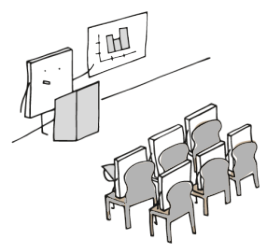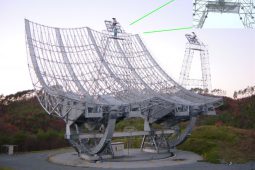PPARCセミナー (2022/11/11)

PPARCセミナー 2022/11/11
発表者: 永田和也 (M2)
タイトル: Development of ground-based instruments for long-term continuous planetary observation 惑星長期連続観測のための地上観測装置開発
アブスト: Long-term continuous observations are important for understanding the phenomena of planetary atmospheres and plasma variations, but it is difficult to secure machine time for large telescopes. We will report on the development status of the off-axis telescope PLANETS and the infrared imager TOPICS, which are being developed for long-term continuous planetary observations. At the end of the presentation, I will also describe my future plans until the submission of my master’s thesis. (1) Development of the PLANETS telescope primary mirror and support mechanism
PLANETS (Polarized Light from Atmospheres of Nearby Extra-Terrestrial Systems) is an off-axis telescope with a 1.8m aperture. The telescope is scheduled for first light in Japan in FY2022, after which it will be moved to the Haleakala Observatory in Hawaii.
The primary mirror (1.85 m in diameter and 100 mm thick Clearceram-Z HS at the outer edge) has been formed to a mirror surface error of 1.50 μm RMS as of September 2021, and is currently undergoing final polishing in collaboration with Nagoya University, Kyoto University, and LogistLab. In the final polishing, we are aiming for a specular error < 50 nm RMS for a diameter range of 1.5 m, excluding up to 10 Zernike polynomial terms.
The axial support structure of the primary mirror is a 36-point whiffletree structure. By combining this structure with a warping harness consisting of a plate spring and a linear motor, the support force at each support point is controlled with 33 degrees of freedom. As a preliminary test to verify the operation, the warping harness was driven with the primary mirror in place in January, and shape measurements were taken for six different drive patterns, the results of which will be reflected in the drive model of the support mechanism. (2) Development of Infrared Camera TOPICS
Kambara [2020] has developed TOPICS (TOhoku Planetary near-Infrared Camera System), a near-infrared imaging system, and ESPRIT (Echelle Spectrometer for Planetary Research In Tohoku University), a near-infrared high dispersion spectrometer, as near-infrared observation equipment for small and medium aperture telescopes. TOPICS uses a Raytheon CRC463 InSb256x256 FPA detector with sensitivity from 1 - 5 µm. After the demonstration of TOPICS, the detector driving circuit will be transferred to ESPRIT for continuous observation of planetary atmospheres with high dispersion spectra (λ/Δλ ~ 20,000). We are planning to install ESPRIT on PLANETS in the future.
We hope to demonstrate the operation of the TOPICS detector drive circuit and conduct test observations during this fiscal year, and in the future, we aim to monitor observations of the infrared emission from the Jovian atmosphere using TOPICS / ESPRIT. 惑星大気・プラズマの変動現象の理解のためには長期連続観測が重要であるが、大型望遠鏡はマシンタイムの確保が難しい。惑星の長期連続観測のために開発が進められている、軸外し望遠鏡PLANETSと赤外カメラTOPICSの開発状況を報告する。また、発表の最後に修士論文提出までの今後の予定を述べる。(1)PLANETS望遠鏡主鏡と支持機構の開発
PLANETS(Polarized Light from Atmospheres of Nearby Extra-Terrestrial Systems)は口径1.8mの軸外し望遠鏡である。2022年度に国内でのファーストライトを予定しており、その後はハワイ・ハレアカラ観測所への移設・運用を目指している。主鏡(直径1.85m、外縁厚さ100mmのクリアセラム)は2021年9月時点で鏡面誤差1.50μm RMSまで成形されており、現在名古屋大・京都大・ロジストラボ社と共同で最終研磨を実施中である。最終研磨では、Zernike多項式10項までを除いた直径1.5mの範囲についての鏡面誤差 < 50 nm RMSを目指している。主鏡の軸方向支持構造には、36点支持のwhiffletree構造を採用している。これに板バネとリニアモーターからなるwarping harnessを組み合わせることにより、各支持点の支持力を自由度33で制御する。この動作検証のための予備試験として、1月には主鏡を設置した状態でWarping Harnessを駆動させ、6種類の駆動パターンについて形状測定を行っており、この結果を支持機構の駆動モデルに反映させる予定である。
(2)赤外カメラTOPICSの開発
Kambara [2020]は小・中口径望遠鏡設置用の近赤外観測装置として、近赤外撮像装置TOPICS(TOhoku Planetary near-Infrared Camera System)と近赤外高分散分光装置ESPRIT(Echelle Spectrometer for Planetary research In Tohoku University)の開発を進めた。TOPICSは1 - 5 µmに感度を持つレイセオン社のCRC463 InSb256x256 FPA検出器を用いている。TOPICSの検出器駆動回路は並行して開発中のESPRITと共通であり、TOPICSでの動作実証後はESPRITに検出器駆動回路を移設して、高分散分光(λ/Δλ~20,000) の惑星大気連続観測を目指している。ESPRITは将来的に、上述した軸外し望遠鏡 PLANETSへの設置を計画している。
我々は今年度中に TOPICS の検出器駆動回路の動作実証と試験観測を実施したいと考えており、将来的にはTOPICS / ESPRITによる木星圏の赤外発光のモニタリング観測を目指している。
発表者: 鍵谷将人 (Staff)
タイトル: Metrology and polishing of PLANETS primary mirror III PLANETS望遠鏡主鏡の形状計測と研磨III
アブスト: A low-scattered light telescope PLANETS would be a 1.8m off-axis telescope on Mt. Haleakala, Hawaii. A primary mirror is an off-axis parabola made of CLEARCERAM with 1.85 m in diameter. We are now making final phase work of polishing and figuring with an unique profilometry technique “dragged three-probe method” (Kurita et al., 2016). By dragging three laser probes across the test surface in several hundreds of scanning paths, we measure distribution of local curvature and derive distribution of surface figure error by integrating the curvature measurements. The measurement system is robust against environmental vibration and temperature variation. Combining A with an industrial robotic arm system, we can quickly switch profilometry probes into a polishing tool enabling a shorter cycle of metrology and polish. The latest result and prospect of metrology and polishing will be presented. 口径1.8 mの軸外し望遠鏡であるPLANETS (Polarized Light from Atmospheres of Nearby Extra-Terrestrial Systems) は、東北大学がハワイ大学他との国際協力のもと開発を進めており、ハワイ・ハレアカラ観測所への設置を最終目標として2022年度に国内でファーストライトを迎える予定である。掩蔽物のない低散乱光学系という特徴を生かして、太陽系内惑星や衛星近傍の大気・プラズマ発光といった、輝度の大きな天体近傍の微弱な発光の観測(高ダイナミックレンジ観測)を重要な目標の一つに挙げている。本発表では名古屋大、京都大、ロジストラボ社と共同で開発を進めている1.8m主鏡の形状計測と研磨状況について報告する。本研究ではロボットアームを用いた引き摺り3点法(Kurita+2015)を形状計測の基盤技術として利用する。3点法では計測経路に沿った形状の2階微分に相当する局所曲率の変化を測定し、これを2階積分することで形状を導出するが、この技術を非軸対称面に適用した実績はなく、計測の過程で様々な問題点が明らかとなってきた。発表では形状計測結果と研磨の進捗、今後の見通しについて発表する。
“





